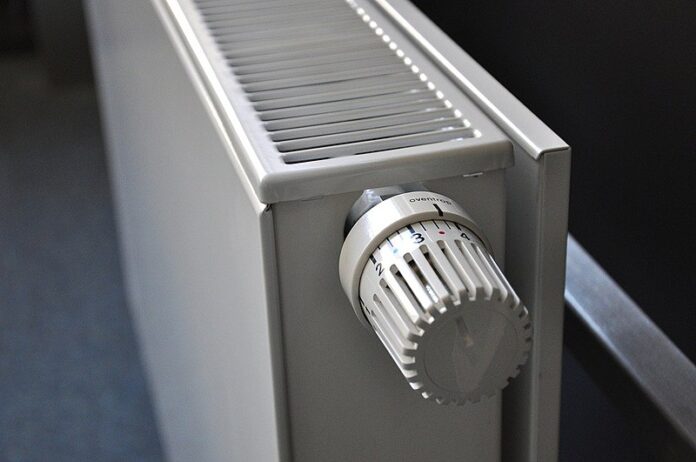Gas and electricity prices are high. Saving energy doesn’t have to be expensive, complex or time consuming, though. With small measures you can save lots of energy and keep a comfortable and cosy home. From lowering the thermostat to shutting sunscreens, you can save up from hundreds to thousands of euros.
Saving tip 1: Lower the daytime temperature and heat sparingly
Set your heating to 19 degrees during the day, instead of 20 degrees, and put on a warm sweater or use an electric blanket. Turn off the heating in rooms that are not used and keep the doors closed.
Households can save up to 1250 euros a year, in case of an average single-family home with a commonly used high efficiency boiler (HR-ketel) and a gas price of 3 euro per cubic metre.
Saving tip 2: Set the nighttime temperature to 15 degrees and ventilate
Before you go to bed, set the thermostat to 15 degrees Celcius. It’s also best to set the temperature at 15 degrees when the house is empty during the day. If you have underfloor heating do not set your thermostat lower than 17 or 18 degrees, otherwise it will take too long to heat up your home.
Dry air heats up more easily than humid air. So ventilate your house regularly. For example, before sleeping, when you are cooking or hanging the laundry indoors. A household with an average single-family home can save about 900 euros lowering the thermostat to 15 degrees and ventilating regularly.
Saving tip 3: Adjust the boiler operating temperature
Your installer can check with you whether your boiler is at the right operating temperature. Ask for advice about the maximum and most economical temperature. Sometimes it can easily be lowered from 80 to 60 degrees. This way you can save a lot of gas.
Saving tip 4: Seal seams and cracks
Old houses often have seams and cracks near windows and doors. You can easily close these with draft strips and save energy. Your house will feel a lot warmer, also. Draft strips are available at any DIY store in different shapes and sizes. For an average corner house, sealing seams and cracks saves about 70 cubic metres of gas, which amounts to a saving of 60 euros per year.
Saving tip 5: Keep it warm with foil
Your radiators give off heat at the front and back. Often heat at the back is not necessary, for example when the radiator is situated near a facade wall. Stick radiator foil behind the radiator and more heat stays in the room. Your house will heat up faster and your thermostat temperature can be lowered. The average annual saving is about 10 cubic metres gas per year per square meter of radiator foil.
A large part of the heat in homes is lost through windows. A cheap and easy way to keep more heat inside is to apply insulating window foil. This film can also be a smart solution if you live in a rented house. With double glazing, window foil provides an annual saving of €3 per square metre and with single glazing €11 per square metre.
Saving tip 6: Take short showers
You need hot water – and therefore gas – to shower. By taking 5-minute showers, an average household can save about 140 euros per year. Set a timer or choose a favorite shower song. Turning off the shower while soaping will also help shorten your shower time.
Savings tip 7: LED’s do it
Light emitting diodes consume up to 90% less electricity than conventional light bulbs or halogen lamps and last 30 to 50 times longer. There are many different types of LED lamps available. Milieu Centraal made a decision aid to help you find the best lamp(s). Turn off the lights when you leave a room. Use the daylight when possible. Then you you save more energy.
Saving tip 8: End stand-by consumption and buy economical devices
Unnoticed, your apparatus consume a lot of power, even when you don’t use these. This is called stand-by consumption. So, turn off your devices and remove plugs from sockets.
Buy energy-efficient devices, only. You can quickly see from the energy label which dryer, television screen or refridgerator, for example, is most economical. The labels run from A (or sometimes A+, A++ or A+++ on older devices) to G, from most energy efficient to least.
Saving tip 9: Wash at lower temperatures
The lower the water temperature, the lower the energy consumption of the washing machine. For example, washing at 30°C uses half as much energy as washing at 40°C.
Do you have laundry that needs to be washed at 40°C or higher, though? Choose the eco program. With this program you save about 30% energy on average.
Saving tip 10: Block the summer heat
Do you have shutters, screens or awnings? Keep them closed during a hot sunny day. Open everything up at night or morning. Immediately after sunrise is the coolest period, mostly.
Still need extra cooling? With a fan it quickly feels up to 3 degrees cooler. These devices are cheaper, quieter and less harmful to the environment than air conditioners.
Martijn van den Bouwhuijs
















